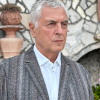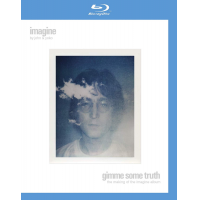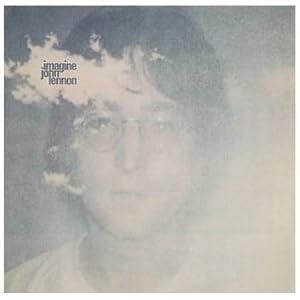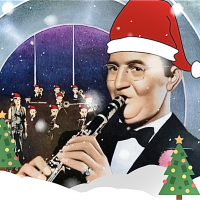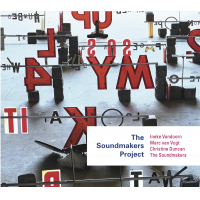Home » Jazz Musicians » John Lennon
John Lennon
John Lennon was the Beatles' most committed rock & roller, their social conscience, and their slyest verbal wit. After the group's breakup, he and his second wife, Yoko Ono, carried on intertwined solo careers. Ono's early albums presaged the elastic, screechy vocal style of late- '70s new wavers like the B-52's and Lene Lovich. L7 and Babes in Toyland have also been influenced by and benefited from Ono's attitudinal, emotionally trailblazing work. Lennon strove to break taboos and to be ruthlessly, publicly honest. When he was murdered on December 8, 1980, he and Ono seemed on the verge of a new, more optimistic phase. In the years since Lennon's death, many critics and music historians have revised their view of Ono to recognize her contributions as a pioneering woman rock musician and avant-garde artist. Like the other three Beatles, Lennon was born to a working-class family in Liverpool. His parents, Julia and Fred, separated before he was two (Lennon saw his father only twice in the next 20 years), and Lennon went to live with his mother's sister Mimi Smith; when Lennon was 17 his mother was killed by a bus. He attended Liverpool's Dovedale Primary School and later the Quarry Bank High School, which supplied the name for his first band, a skiffle group called the Quarrymen, which he started in 1955. In the summer of 1956 he met Paul McCartney, and they began writing songs together and forming groups, the last of which was the Beatles. In 1994 a tape of John and the Quarrymen performing two songs, made July 6, 1957, the day he met McCartney, came to light. Recorded by Bob Molyneux, then a member of the church's youth club, it was auctioned at Sotheby's in September 1994, fetching $122,900 from EMI. On the tape, Lennon sings "Puttin' on the Style," then a Number One hit for skiffle king Lonnie Donegan, and "Baby Let's Play House," the Arthur "Hard Rock" Gunter song that had been recorded by Elvis Presley and a line of which ("I'd rather see you dead, little girl, than to be with another man") Lennon later used in the Beatles' "Run for Your Life." Just before the Beatles' official breakup in 1970 (Lennon had wanted to quit the band earlier), Lennon began his solo career, more than half of which consisted of collaborations with Ono. During the early '60s Ono's works (many of which were conceptual pieces, some involving audience participation) were exhibited and/or performed at the Village Gate, Carnegie Recital Hall, and numerous New York galleries.
Read moreTags
The Beatles: Anthology 4
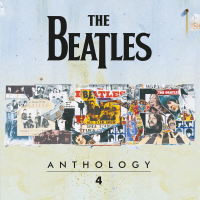
by Doug Collette
The Anthology Collection is a box set of music by the Beatles, released on CD as well as vinyl to commemorate the 30th anniversary of the original broadcast of the video documentary The Beatles Anthology. In addition to remastered versions of the previous collections--each of which focuses on a designated period of the iconic band's history--the comprehensive set now features Anthology 4, a 36-track microcosm of the Liverpudlians' canon, thirteen selections from which have never been released before.
Continue ReadingRevolver Super Deluxe Edition (5CD)

by Doug Collette
The five CDs in The Beatles' Revolver Super Deluxe Edition reaffirm a fundamental verity regarding the group's work. The Liverpudlian quartet was never more unified in its creativity than in writing, recording and producing the sixteen tracks that comprise the box in collaboration with producer George Martin, engineer Geoff Emerick and the additional musicians and technicians who participated. The curators of this set in turn have channeled the remarkably pragmatic and disciplined approach of the Beatles and company. ...
Continue ReadingLet It Be - Super Deluxe Special Edition

by Doug Collette
It's perfectly reasonable to state that the Beatles' Let It Be Super Deluxe Special Edition is the iconic group's third attempt to release music from their (three weeks of) January 1969 recordings. Originally set to be released as an album titled Get Back Don't Let Me Down and 12 Other Songs (as emblazoned on a contemporary cover photo replicating that shot on their very first long-player from 1963), that collection morphed into Let It Be (Apple, 1970), the initial foray ...
Continue ReadingJohn Lennon's Imagine: The Ultimate Collection & Imagine/Gimme Some Truth Films

by John Kelman
While hardly a new idea, with so many classic artists and recordings now hitting forty and fifty-year milestones, there's been a proliferation of deluxe and super deluxe editions of major albums from the '60s and '70s in recent years. While some are better (and better value for money) than others, the market for surround sound mixes (and, as a consequence, new stereo mixes) and remasters have become a go-to approach for labels and artists looking to encourage fans to invest ...
Continue ReadingTaj Mahal, Me'shell Ndegeocello, Others - 30th Annual John Lennon Tribute (2011)

Source:
Something Else!
Taj Mahal, recording as part of the 30th annual John Lennon Tribute at the Beacon Theatre in New York City, finds the chest-bursting peril, the nakedly emotional plea, inside “Come Together"—giving it such a thunderously heartfelt makeover that you'd swear this old Beatles tune had been a blues shout first. And that's just one of what becomes a stirring series of remakes on this Lennon memorial project, to be issued today. Shelby Lynne ("Mother"), Me'shell Ndegeocello ("God"), Alejandro Escovedo ("Help!) ...
read more
EMI to Release Lennon Collectors Set

Source:
All About Jazz
EMI Music will commemorate the 70th anniversary of John Lennon's birth Oct. 5 with a flight of new releases, including a stripped-down remix of the late ex-Beatle's bestselling album, a hits compilation, a themed four-CD box and a comprehensive 11-CD collectors set.
Overseen by Lennon's widow Yoko Ono, so-called “Gimme Some Truth" campaign (named after his 1971 song) kicks off with release of eight remastered solo studio titles. Among these will be the remixed edition of “Double Fantasy," the 1980 ...
read more
Lennon Lyrics Fetch $1.2m at NYC Auction

Source:
All About Jazz
John Lennon's handwritten lyrics to the final song on the classic Beatles album Sgt. Pepper's Lonely Hearts Club Band were purchased by an American collector on Friday for $1.2 million.
The winning bid for “A Day in the Life" was placed by phone at Sotheby's auction house, which declined to identify the collector further. The price exceeded the pre-sale estimate of $500,000 and $800,000. The double-sided sheet of paper features Lennon's edits and corrections in his own hand -- ...
read more
Handwritten Lennon Lyrics to be Auctioned

Source:
All About Jazz
One side of a handwritten, autographed manuscript by the late John Lennon is shown. The document, with the lyrics to “A Day in the Life," will be offered at auction by Sotheby's in New York on Friday, June 18. For the right price, some lucky Beatlemaniac will be able to own the lyrics to the final song on the classic Beatles album “Sgt. Pepper's Lonely Hearts Club Band." John Lennon's handwritten lyrics to the Beatles classic “A Day in the ...
read more
John Lennon Museum to Close

Source:
All About Jazz
The world's only authorised John Lennon Museum, on the outskirts of Tokyo, will close its doors in September when a deal with his widow Yoko Ono ends, the operator said Thursday.
The museum dedicated to the former Beatle opened in Saitama north of Tokyo in 2000 on the 60th anniversary of Lennon's birth and displays about 130 items, including guitars, stage costumes and hand-written lyrics.
After 10 years here, John's spirit is now moving on -- looking onward to the ...
read more
John Lennon: "Nowhere Boy" Original Soundtrack

Source:
Noble PR
Sony Music is pleased to announce the CD and digital download release of the soundtrack album of the year, Nowhere Boy - the critically acclaimed film biopic about John Lennon's teenage years that led to his music career from the Quarrymen, to his early relationship with Paul McCartney and the Beatles' first trip to Hamburg.
To celebrate the release of the soundtrack album, Sony is holding an exclusive screening of the Nowhere Boy film at Abbey Road Studios for journalists ...
read more
John Lennon Re-Imagining Himself, then Gone

Source:
Michael Ricci
Robert Hilburn, former pop music critic for the Los Angeles Times, is author of “Corn Flakes With John Lennon (and Other Tales From a Rock 'n' Roll Life)." An excerpt in Sunday Calendar recalled his relationship with Lennon after the Beatles' breakup. In today's abridged excerpt, he writes about Lennon's murder. In 1980, after 10 years at The Times, I was at a crossroads in my personal life. I loved my family, but I was also so obsessive about my ...
read more
In My Life: Robert Hilburn's 'Corn Flakes with John Lennon'

Source:
Michael Ricci
Robert Hilburn was pop music critic for the Los Angeles Times for 35 years, from the psychedelic era to the emergence of the iPod. He witnessed many of rock 'n' roll's seminal moments and interviewed virtually every major pop figure of the period.
All of this is chronicled in his memoir, “Corn Flakes with John Lennon (and Other Tales From a Rock 'n' Roll Life)," to be published this month. In this abridged excerpt, Hilburn explores his relationship with Lennon ...
read more
John Lennon Biopic “Nowhere Boy” Grabbed by Weinstein Company

Source:
All About Jazz
Nowhere Boy, a biopic about John Lennon’s childhood, has been picked up by the Weinstein Company, Variety reports. The project is two weeks into filming with Aaron Johnson, who played the young Ed Norton in The Illusionist, in the role of Lennon and English Patient star Kristin Scott Thomas portraying the Beatle’s aunt, who battled Lennon’s mother Julia for custody.
The film will examine the effects each woman and their custody fight had on the young musician. Variety says the ...
read more
College's Lennon Center Expanding Its Offerings

Source:
Michael Ricci
Martin Cohen is chairman of the John Lennon Center for Music and Technology at Five Towns College. IT would be tough to find a more intense concentration of fans, scholars and interpreters of the work of John Lennon than the one at Five Towns College here. In 2005, Yoko Ono, Lennon’s widow, came to the college to help dedicate its John Lennon Center for Music and Technology, which offers audio and video equipment for students, academic courses — including one ...
read more



